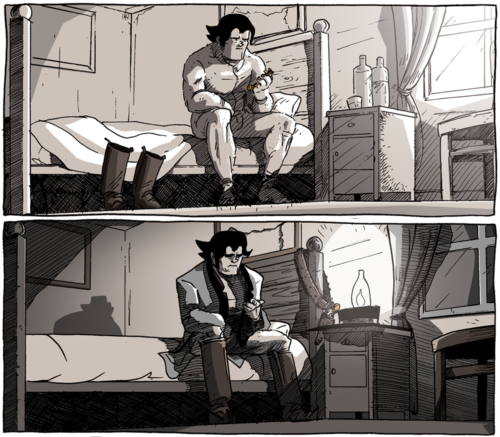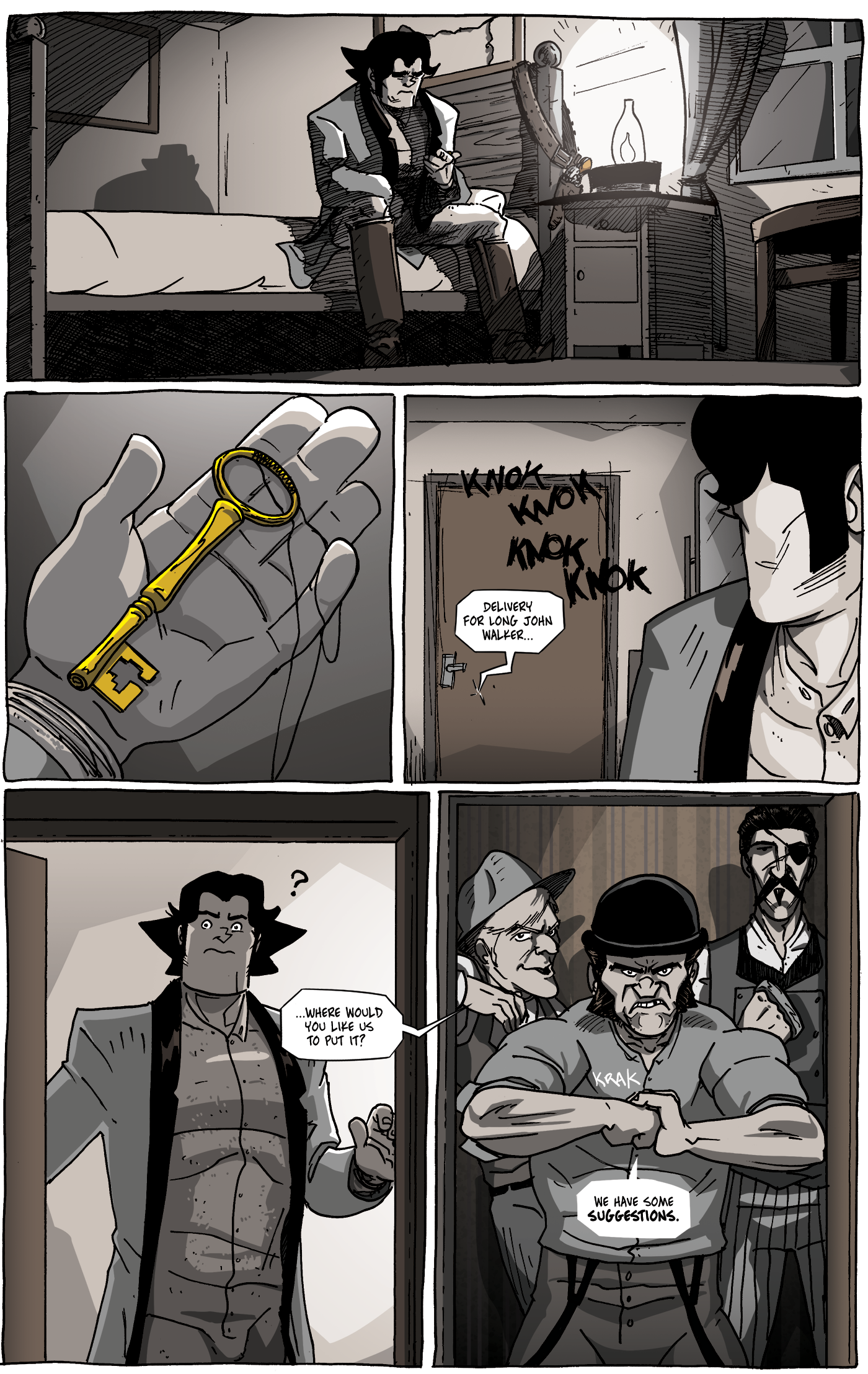Room Service
I enjoy the quiet challenges of drawing more than the gregarious, in-your-face pinups and action scenes. It’s a fun question to try and answer: what does thinking look like? What does sadness look like? What does confused look like?
Specifically, what does “Someone sitting on the edge of a bed staring at something in his hand and feeling bad about it” look like? It’s a fun experiment, especially when using this composition as tentpole moments for the chapter. The context for the moment––everything that lead up to it––is very different from when we saw this at the beginning of the chapter to when we’re seeing him now at the end.

This scene was used twice as plot and emotional tent poles in this chapter, each representing significantly different contexts for Long John (aside from one being in the morning and the other at night). Click for a larger image.
Everything about an image becomes a tool for expression and a lot of it becomes a matter of tweaking once the basic shapes are laid down. I find it fun to sit and consider the context for the image, to make it more than just a stock “person looking sad” image, but instead trying to really convey in their acting why they’re sad even if the reader doesn’t have the context. With hope, you can feel the weight on Long John’s shoulders on this page. You can that he’s wracked by a sense of guilt that wasn’t quite there before (or not there as much). With hope, you see him as a clear and independent character instead of just a stand-in for one. That’s the hope, anyway.




Discussion ¬